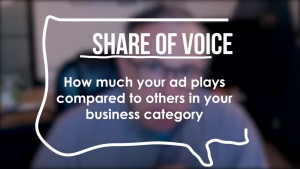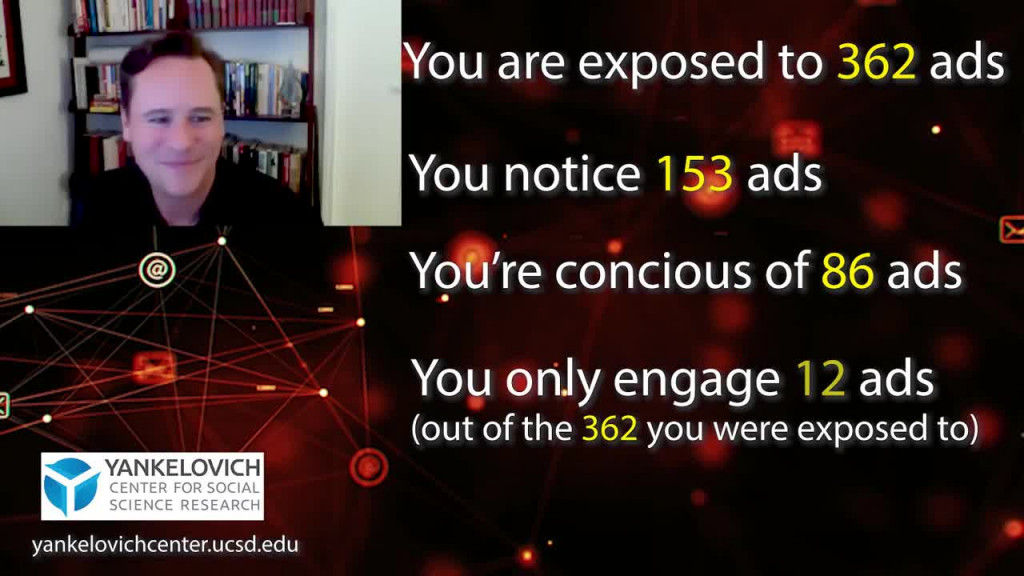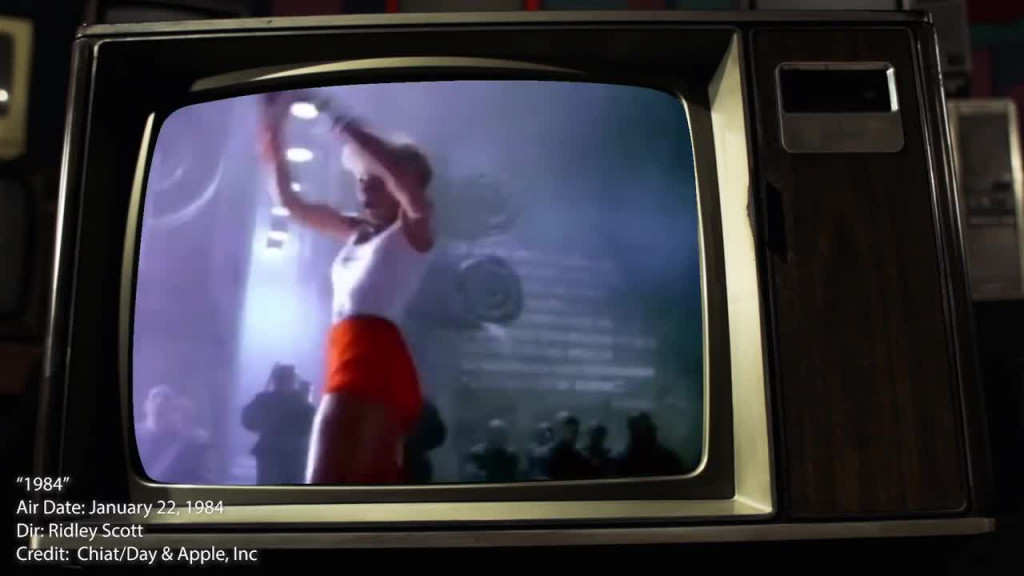Johnny Molson: When media people talk about frequency, they’re talking about how often the ad gets played, but the secret isn’t how often the ad gets played. It’s about how often the ad gets played to the same people over and over again. In other words, you don’t want to play your ad just a few times to a lot of people. You want to play your ad a lot of times to a very small number of people so that you can hit them relentlessly. So frequency and repetition are a key element in advertising.
And to talk about that today on the Wizard’s Roundtable, we’ve got a bunch of Wizard of Ads Partners. In Pensacola, Florida, “The Professor” Jeff Sexton. In Toronto, we have both Gary Bernier and Stephen Semple. And in Austin, Texas is Joe Hamilton. We’re going to talk today about not only how long you should let ads play, but how frequent a group of people should hear the ads in order for it to start making impact. We had a great conversation with all of these marketers so much so that we’re going to break this up into multiple episodes. But we’re going to begin with Jeff Sexton explaining why it’s so important to get repetition.
Jeff Sexton: I think there is a mistake by maybe ad writers or advertising people who think, “Oh, well my ad is so good. It can run once and it will be good.” As if every ad is the Apple 1984 Super Bowl ad, right?
Announcer: On January 24th, Apple computer will introduce Macintosh. And you’ll see why 1984, won’t be like 1984.
Jeff Sexton: The vast majority of ads don’t make that kind of impact on the first viewing. So you need repetition. And so in the Wizard world, we talk about how the more salient your ad is, the less repetition it needs. But compared to people’s lives, your ad is low salience. So it needs repetition. Sleep also is like the great eraser of information — superfluous information — from the day. You clear your mind every time you go to sleep. So our general formula is you want the average listener to hear the ad at least three times in the week so that the residue of it will stick, right? And that’s assuming your ad has decent impact.
Johnny Molson: Which is assuming a lot. Most ads don’t have that kind of 1984 impact. They’re somewhere between horribly boring and remarkable. Does the same apply — and you know, Gary, I know you work a lot in the digital world and Steven, you come from direct mail — does the same apply in all other media?
Gary Bernier: From the digital space, Johnny, if you’re trying to create a brand message, like we are, trying to get people to create a bond with you, then yeah. They need to be touched more than once. You think about it like any normal human interaction. If I meet you once you, I’m not necessarily going to remember that interaction six months later, unless you were a movie star or somebody significant in my life. So the same thing applies there on the digital side. If you’re trying to build that bond with the customer and keep that communication going, you want that repetition. Stephen?
Stephen Semple: Yeah, absolutely true. And one of the most interesting studies I’ve ever come across was one where Canada Post did a study with a credit card company. And this credit card company had like a multi piece mailer that went out. And what they found was the third piece of mail had the greatest response. And so what they did is they said, “Okay, well let’s now resend this out, but let’s change the order. Let’s shuffle the deck and send it out again. And let’s see whether we get the same response and get the same thing.” And guess what? The third piece had the highest response. Different third piece! Different third piece. Which speaks to the power of repetition. And some of the most successful direct mail companies out there will tell you: how long do you run the direct mail campaign? You run it until people stop buying.
Stephen Semple: And there is a famous one, Hume Publishing, which used to send out these investment magazines. They would run campaigns that would be 40 and 50 pieces long. Because they were like, “Yeah, people are still buying, so we’re going to keep mailing it.” And in fact it was not unusual that it would rise over time.
Johnny Molson: And Joe, you come to us from the media buying side. A large frequency in what period of time are we looking for?
Joe Hamilton: So I’m attempting on every single radio station to hit the three frequency. Regardless of how much I’m spending in any market, my goal is always to hit a three frequency on every single station.
Johnny Molson: And define a three frequency for businesses.
Joe Hamilton: A three frequency is when the average listener hears your ad three times in a given week.
Johnny Molson: In a given week, okay. To get to that level requires a certain number of ads to play overall. And that may vary depending on audience size and how long they’re listening.
Joe Hamilton: Yeah, that’s absolutely going to vary on audience size. Age of the audience is going to have to play into it. The younger an audience tends to be, the much more difficult it is to actually retain that audience. And over the past few years, I’ve noticed also that overall getting that three frequency has become harder and harder. Just because we’re allotting less and less time to what we’re doing with everything that we do. So, some stations would require in a smaller market, maybe 21 was the old formula. And in other markets, it could be over 100 spots in one given radio station on one given week to get to a single three frequency.
Jeff Sexton: I was going to say the other thing I’d like Joe to talk about, because I think it’s fascinating. The bigger the city, the higher the frequency actually has to be. In a small town with not much happening, you can get away with a little bit of a lower frequency.
Joe Hamilton: The reason for that is because in a small town, you have fewer advertisers and the fewer advertisers there are the easier it is to heard. When you are in a big town, like say New York, you need that 100 something spots. Because there are so many people advertising, there’s so much noise being made in the market, but yours has to really stand out — either in repetition or as Jeff said earlier in salience.
 Johnny Molson: One of the things that we look at as well is what’s called Share of Voice, which is how much your ad is playing compared to people in your category. And as we maybe come out of the pandemic times and possibly going into a recessionary times, Share of Voice, seems to have changed for the better for people who are still on the air. What are you guys seeing?
Johnny Molson: One of the things that we look at as well is what’s called Share of Voice, which is how much your ad is playing compared to people in your category. And as we maybe come out of the pandemic times and possibly going into a recessionary times, Share of Voice, seems to have changed for the better for people who are still on the air. What are you guys seeing?
Joe Hamilton: What I’m currently seeing is that the bigger advertisers, Ford, GM, Coca-Cola, et cetera, as soon as the numbers came back, they have gone back to their million dollar a year spends in every given market. And then the larger guys who tended to already dominate a market, maybe a locally owned person, or not quite a Fortune 500 but a big company, also were able to afford to get back on. The average guy is not quite there yet.
Johnny Molson: Is it accurate to say that as we look into the second half of 2020, that there is less clutter out there?
Joe Hamilton: There’s currently less clutter out there, yes. But you know, it’s very hard to predict right now what’s actually going to happen.
Johnny Molson: So you’ve started a campaign and you have a series of ads that you’re going to run. How long should each ad stay on? How many ads do you run at a time? These are questions that businesses wrestle with a lot.
Jeff Sexton: You may have heard of the Yankelovich study that talks about 5,000 branded messages or 8,000, depending on which number. And to my mind, that’s always been a little inflated because they’re talking about like the Polo on your shirt as a “message”. And when you open your cupboard, the ads in the cereal box, right? Like the branding on the cereal boxes, and that’s how they get to that huge number. But when they talk about actual advertisements, the number is 362. That’s what Yankelovich says.
Johnny Molson: In a day?
Jeff Sexton: In a day, yes. But they say you’re only even peripherally aware of, you only peripherally note 153 of them. So about less than half. And then you’re only consciously really aware of 86 of them. And you only mentally engage with 12 of them. So 3% of the ads, rght? And so one of the things repetition does is it helps to draw — if the ad is any good at all, it helps to draw people’s attention to it. If you think about it, like if you’re driving down the street and you see a wizard, like someone dressed in wizard’s robes. Or a gorilla suit, we’ll just say a gorilla suit. You’ll note it maybe. And then you’ll forget about it because it’s just some weirdo walking down in a gorilla suit. But if you see like five of them, you’re like, “What is going on there?”

And, you know, if you hear an ad peripherally, it’s just an ad. But if you keep hearing those ads, eventually you’ll be tuned in like, “Who is this person that’s constantly talking?” So that’s one of the things that a lower impact ad can gain mindspace — simply through that repetition, right? It’s one of the things that happens. Typically what we have done with the three frequency has been run the ad for a month. At some point it was to run two ads in rotation for a month.
Jeff Sexton: And the question becomes what happens if you run it too long? And what happens if you don’t remember it enough? So if you run it too long, what you run the risk of are two things. One, people tuning it out because they’ve already heard it and it becomes noise. Or two, that it becomes annoying. And then they associate your company with annoyance, which is not a good thing. So that’s what you’re trying to avoid. You’re trying to avoid either having them tune it out because they’ve heard it enough and they know every word of it or they’re annoyed by it. And I think what Joe will talk about is that has become more of a problem recently with so many people running COVID style ads. In these unprecedented times… And there’s been an ad that basically they plays all of them over each other. And they basically followed the same formula.
Announcer: “At times like these. During these difficult times. In these troubled times. In challenging times. Trying times. In these times of uncertainty. During this time of great uncertainty. During these uncertain times.”
Johnny Molson: So it becomes Charlie Brown, “wah, wah.” But it’s also as I think Joe was talking about earlier, it’s an annoyance because it’s drawing your attention to something negative. And so the ability to burn out your ad becomes much higher, right? People are looking to be entertained. They’re looking for novelty, they’re looking for something, a bright, bright spot.
Gary Bernier: And the other point that we talked about with Joe was the listening pattern. And if you’re, as he said, tuning in for your country break in the evening, or turning in for your rock and roll break, you’re tuning in and listening to the radio because it’s part of your entertainment. So like you said, you’re escaping, we’re turning back to radio to escape the bad news, to escape the everyday.
Jeff Sexton: Yeah. And I think this is where Joe and I are very much on the same page. We’re increasing the frequency of rotating the ads out. And we’re making sure the ads have, what psychologists call it’s “emotive quality,” is upbeat and positive. And we’re not talking about COVID or “these unprecedented times.”
Johnny Molson: So there’s a lot of variables here, though. How salient is the message? How relevant is it to me? How positive or negative is it? You know, there’s a lot of levers there to pull. So I think it makes it harder to put some sort of tangible metric on it, given those variables.
Jeff Sexton: I think one of the mistakes that advertisers make — and they make it, whether they’re designing a trade show booth, or picking a radio ad, or looking at a billboard, or any of those things, is the surrounding context.
Stephen Semple: Every billboard looks great when it’s the only thing that’s on your computer screen. Every trade show booth looks great when it’s the only thing that’s on your computer screen. Every radio ad sounds great when you just listen to that ad. But when you suddenly listened to that ad in the context of what everybody else is doing suddenly, you’re like, “Holy crap. I’m saying the same thing as everybody else.” Or the moment I see that trade show booth and I picture it in amongst all the other trade show booths is like, “Jesus Christ. Mine is the same as everybody else’s except I’m blue and they’re green.”
So I think the issue here is context becomes really important. But now more than ever, because the context three weeks ago is different than it is today, which is going to be different than it is three weeks from now. We don’t even know what it is three weeks from now. Every week right now is a lifetime in terms of what’s going on. And we have to be constantly aware of that, adjusting accordingly. And listening to what are others doing and resisting the temptation, “Well, if they’re doing it, I need to do it.” No, no, if they’re doing it, I can’t do it. I need to do something different. And I think the problem is sometimes businesses and whatnot, they’re making that decision without really thinking about it in the broader context. This is an ad that’s going to be heard in a flight of ads.
Gary Bernier: Steven, that was a brilliant tip that you gave anybody that’s listening to this Roundtable.
Joe Hamilton: Amen to that.
Gary Bernier: Take whatever ad they have and put it into that context. And also to change that context, because as you said, the context is changing week to week, month to month. So what worked last month won’t necessarily work this month. Or a message that cut through the clutter and was impactful one way, all of a sudden it gets copied by everybody else and is no longer cutting through. So I think that was a fantastic tip that you gave to take any piece of creative and put it into context and try and look at it up against the competition and see what kind of impact factor it has.
Johnny Molson: Pandemic aside. You know, some of these things are fundamentals too for advertising. Whether there is a COVID or not COVID. So what is the risk of leaving an ad on too long, or even pulling it off too soon?
Joe Hamilton: Well, I’m actually glad that you asked that question, Johnny. Because one, the reason that this all came about is watching that fatigue that I spoke of earlier, since about Y2K, for the past 20 year. The more people are connected online and on their phones and on Twitter, the less — I actually began to wonder is the perception of time changing? And I said to myself, no the perception of the same time actually can’t change. That’s not possible. What is possible is how people are willing to allot their time, how much time they’re willing to give you and listen to you.
Gary Bernier: And as Wizard partners, we have this wonderful term called Brandable Chunks. And so if the Brandable Chunks are threaded between the messages and you’re actually running a campaign, if you’re a little bit too short with an ad, it may not matter. Because the Brandable Chunk carries from one ad over to another ad. Or you’ve actually designed the campaign to carry a Brandable Chunk from one ad to the next ad where they’re linked in some sort of way. What we were talking about was an overlapping strategy. Instead of running one ad for a month and then another ad for a month, it was like, “Okay, run this one. Two weeks later, start another one. Then swap, and sort of have an overlapping strategy for the ad rotation and allow the Brandable Chunks in the middle to sorta blend those concepts together. Jeff, you want to talk more to that?
Jeff Sexton: Yeah, and I want to give credit to our colleague, Chris Maddock, who kind of came up with that term and that technique. And the entire idea was “How do you create repetition with enough variety to prevent boredom?” So not every Brandable Chunk is in every ad. And when they are all in the same ad, they’re not all in the same spot, right? And the variation on how they’re phrased can be enough to make it interesting.
Johnny Molson: We’re very used to tag lines. We’re very used to the ad ending and saying, “McDonald’s, I’m lovin it.” Brandable Chunks have the ability to show up at about any place in an ad, which adds both consistency and variety at the same time.
Jeff Sexton: Right. And they tend to be micro positioning rather than global positioning. So it’s a persuasive point made sharply and hard hitting rather than trying to encompass the entirety like a slogan does. But if you think about it, it’s similar to episodic TV. And the idea in Hollywood is “I want the same thing, but different”. So every episode of M*A*S*H or Cheers, before longterm TV, every episode was kind of the same, right? It followed a similar arc. It had the same characters.
Gary Bernier: “Same Bat-Time. Same Bat-Channel.”
Jeff Sexton: Right. Exactly. But it was different enough that it was interesting. That’s the beauty of having a campaign that is thematically consistent and having those Brandable Chunks that has the messaging consistency, right? So you’re pounding home that messaging consistently with the frequency that we need for it to sink in, but you’re keeping enough variation to keep their attention.
Johnny Molson: So let’s stop there because we’re getting into Brandable Chunks, which is a really interesting topic in and of itself. And so we’re gonna spend a little more time on that in the next episode of the Wizard’s Roundtable. In the meantime, if you have any questions, please put them in the YouTube comments, or you can send an email to any one of us.
- Are You Paying for Too Much for the Wrong Keywords? - July 15, 2024
- Dominate Your Market Like Rolex — 4 Powerful Branding Lessons - July 3, 2024
- Military-Grade Persuasion for Your Branding - June 25, 2024
- Emotion in Advertising Equals Dollars in Business - December 3, 2024
- 2024: The Year Digital Becomes “Traditional” - July 10, 2024
- MYTH: Everyone goes to Google first - June 26, 2024
- Social Media Sucks Today - July 19, 2024
- Happy Happy, Joy, Joy - June 19, 2024
- I hope I can turn you into a fan! - October 19, 2023
- Tipping Point of Retail and the S-Curve - July 22, 2021
- Four Winning Retail Strategies for 2021 - February 11, 2021
- Lambo vs Lear. Plot the growth curve for your business. - October 23, 2020
- Bonding Not Branding - May 1, 2020
- The 7 Most Common Media Buying Mistakes - February 19, 2020
- Billboards, Outdoor, and Ambient Advertising - January 23, 2020


 Announcer: “At times like these. During these difficult times. In these troubled times. In challenging times. Trying times. In these times of uncertainty. During this time of great uncertainty. During these uncertain times.”
Announcer: “At times like these. During these difficult times. In these troubled times. In challenging times. Trying times. In these times of uncertainty. During this time of great uncertainty. During these uncertain times.”